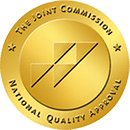Dealing with muscle spasms can be frustrating and painful. You may have heard about Ativan as a potential treatment option, but it’s crucial to understand its proper usage and associated risks. This guide will explore:
- How Ativan works for muscle spasms
- Proper dosage and administration
- Potential side effects and risks
- Alternatives to consider
Recent statistics show that Ativan prescriptions have increased by 37% since 2015, with an estimated 27.6 million prescriptions filled in 2020 alone. However, misuse and abuse rates have also risen, with nearly 17% of users reporting non-medical use. Before considering Ativan for your muscle spasms, arm yourself with the knowledge to make an informed decision about your health.
Call us at (617) 917-3485 today or reach out online.
How Ativan Works for Muscle Spasms
Boosting GABA’s Calming Effects
Lorazepam, the active ingredient in Ativan, belongs to the benzodiazepine class of medications. It works by enhancing the effects of gamma-aminobutyric acid (GABA), an inhibitory neurotransmitter in the brain. By binding to specific GABA receptors, Ativan increases GABA’s calming influence, reducing the excitability of neurons and promoting muscle relaxation.
Combating Muscle Tension
When you experience muscle spasms or cramps, the muscles contract involuntarily due to excessive nerve activity. Ativan’s ability to amplify GABA’s inhibitory effects helps counteract this hyperactivity, allowing the muscles to relax and preventing further spasms. Its calming effect on the brain and nerves makes it an effective treatment for muscle spasms caused by various conditions, such as injuries, neurological disorders, or anxiety.
Rapid Relief and Short-Term Use
One of the advantages of Ativan for muscle spasms is its relatively rapid onset of action. When taken orally, the effects typically start within 30-60 minutes and last for 6-8 hours, providing short-term relief. However, it’s important to note that Ativan is generally recommended for short-term use only, as prolonged use can lead to physical dependence and withdrawal symptoms if stopped abruptly.
By understanding how Ativan works to enhance GABA’s calming effects and relax muscles, you can make an informed decision about using it to manage muscle spasms under medical supervision. Remember to always follow your healthcare provider’s instructions and never exceed the recommended dosage or duration of treatment.
Dosage Guidelines for Using Ativan for Muscle Spasms
Typical Dosing Range
The appropriate dosage of Ativan (lorazepam) for treating muscle spasms can vary significantly based on individual factors. Your healthcare provider will determine the right dose after considering your age, weight, liver function, other medical conditions, and potential drug interactions.
Factors Affecting Dosage
- Older adults and those with liver disease may require lower doses due to increased sensitivity to the medication’s effects.
- It’s crucial to follow the prescribed dosage instructions precisely and never adjust the dose without medical supervision. Doing so could increase the risk of dependence, overdose, or other severe consequences.
Onset of Effects
The effects of lorazepam typically begin within 30-60 minutes after oral administration. However, factors like age, metabolism, and dosage can influence how quickly it takes effect.
Long-Term Use Risks
- Long-term use of Ativan can lead to dependence and addiction, as the brain adjusts to the medication’s presence over time.
- Continued use also increases the risk of experiencing rebound effects like worsened anxiety, muscle spasms, and seizures when the medication is stopped abruptly.
- Supervised medical detox is recommended for safely discontinuing Ativan after extended use to avoid potentially life-threatening withdrawal symptoms.
Possible Side Effects of Using Ativan for Muscle Spasms
Common Side Effects
When using Ativan (lorazepam) to treat muscle spasms, some common side effects may occur. These include drowsiness, dizziness, fatigue, and impaired coordination. You may also experience mood changes like depression, as well as headaches and nausea.
Less Frequent Reactions
In some cases, Ativan can cause more severe side effects. Dry mouth, blurred vision, constipation, and changes in sexual function have been reported. Confusion, hallucinations, and paradoxical reactions like increased anxiety or insomnia are also possible, though rare.
Long-Term Risks
With prolonged Ativan use, you may develop physical dependence and increased tolerance, requiring higher doses. Abruptly stopping can then trigger dangerous withdrawal effects like sweating, tremors, seizures, and rebound muscle spasms. Medical detox is recommended to safely discontinue long-term use and manage withdrawal side effects.
Precautions When Taking Ativan for Muscle Spasms
Ativan (lorazepam) is a benzodiazepine medication that can effectively treat muscle spasms and spasticity. However, it’s crucial to take certain precautions to ensure safe and effective use.
Be Aware of Side Effects
- Drowsiness and dizziness are common side effects of Ativan. Avoid driving or operating heavy machinery until you know how the medication affects you.
- Ativan can impair coordination, increasing the risk of falls or accidents. Use caution when engaging in activities that require alertness.
Follow Dosage Instructions
- Take Ativan exactly as prescribed by your doctor. Never increase the dosage or take it more frequently without medical supervision.
- Long-term use can lead to dependence and withdrawal symptoms if stopped abruptly. Regularly follow up with your doctor to monitor for signs of dependence.
Disclose All Medications
Ativan may interact with other drugs, including over-the-counter medications, supplements, and herbal products. Inform your doctor about all medications you are taking to avoid potentially harmful interactions.
By following these precautions and your doctor’s guidance, you can effectively manage muscle spasms while minimizing the risks associated with Ativan use.
Safe Withdrawal from Ativan When Used for Muscle Spasms
Gradual Tapering is Key
Abruptly stopping Ativan (lorazepam) after using it for muscle spasms can trigger severe withdrawal symptoms. To safely discontinue, the dosage must be slowly tapered down under medical supervision. This controlled reduction gives your body time to adjust and minimizes withdrawal effects.
Common Withdrawal Risks
Without a guided taper, you may experience profuse sweating, nausea, intense anxiety, insomnia, tremors, fever, and even seizures from Ativan withdrawal. These symptoms can be dangerous and painful if not properly managed.
Medically-Supervised Taper
Your doctor will develop a customized tapering schedule based on your current Ativan dosage and duration of use. Typically, this involves reducing your dose gradually over weeks or months while monitoring for withdrawal symptoms.
You may be prescribed other medications temporarily to ease anxiety, restlessness or muscle stiffness during the taper. With medical oversight and the right support, you can safely discontinue Ativan while avoiding potentially life-threatening withdrawal complications.
Ativan Muscle Spasms FAQs
What causes muscle spasms?
Muscle spasms or cramps can arise from various underlying conditions, such as injury, overuse, dehydration, or neurological disorders. They often result from muscle fatigue or irritability of the nerves controlling the affected muscles.
How does Ativan help with spasms?
Ativan (lorazepam) belongs to a class of drugs called benzodiazepines that work by enhancing the effects of GABA, a neurotransmitter that promotes relaxation. This can help relax tense muscles and potentially relieve spasms in low doses for short periods.
Are there side effects?
While benzodiazepines like Ativan can provide relief, they may also cause sedation, dizziness, and impaired motor function. These effects could potentially exacerbate muscle spasms if used long-term or at high doses. Dependency is another risk with prolonged use.
Are there safer options?
For ongoing muscle spasm treatment, non-drug therapies like stretching, massage, or physical therapy may be safer options. Alternative medications like muscle relaxants or anti-inflammatory drugs could also be considered under medical supervision.
Begin Your Journey with Evoke Wellness at Cohasset
If you or a loved one is considering treatment, Evoke Wellness at Cohasset invites you to contact us. Our compassionate team is ready to answer your questions, discuss your needs, and help you take the first steps toward recovery. In Cohasset, you’ll find more than just a treatment program – you’ll discover a community dedicated to your wellness and success. Together, let’s embrace the journey to recovery and the promise of a new beginning. Call us at (617) 917-3485 today or reach out online.





